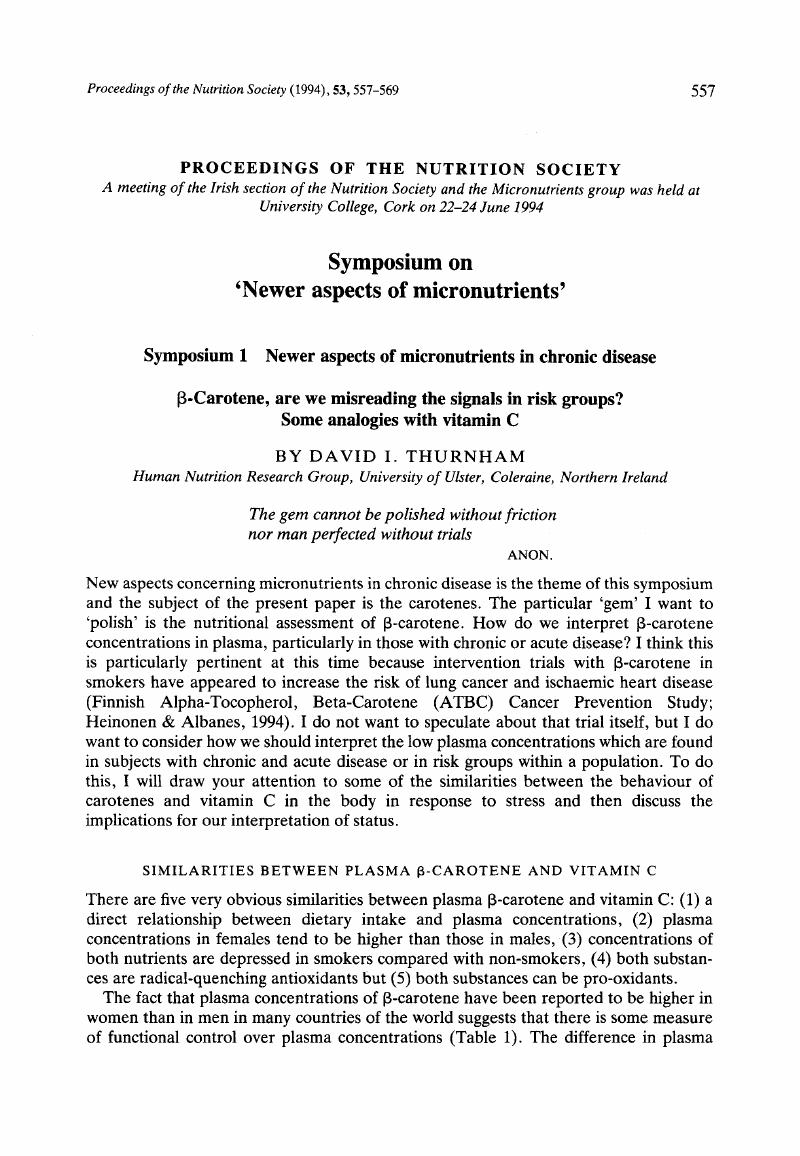Crossref Citations
This article has been cited by the following publications. This list is generated based on data provided by Crossref.
Elia, M
1995.
Changing concepts of nutrient requirements in disease: implications for artificial nutritional support.
The Lancet,
Vol. 345,
Issue. 8960,
p.
1279.
Ziegler, Thomas R.
Leader, Lorraine M.
Jonas, Carolyn R.
and
Griffith, Daniel P.
1997.
Adjunctive therapies in nutritional support.
Nutrition,
Vol. 13,
Issue. 9,
p.
64.
Thurnham, David I.
1997.
Impact of disease on markers of micronutrient status.
Proceedings of the Nutrition Society,
Vol. 56,
Issue. 1B,
p.
421.
Talwar, D
Ha, TK
Scott, HR
Cooney, J
Fell, GS
O’Reilly, DS
Lean, ME
and
McMillan, DC
1997.
Effect of inflammation on measures of antioxidant status in patients with non-small cell lung cancer.
The American Journal of Clinical Nutrition,
Vol. 66,
Issue. 5,
p.
1283.
Armstrong, Nicola C.
Paganga, George
Brunner, Eric
Miller, Nicholas J.
Nanchahal, Kiran
Shipleyb, Martin
Rice-Evans, Catherine A.
Marmot, Michael G.
and
Diplock, Anthony T.
1997.
Reference Values for α-Tocopherol and β-Carotene in the Whitehall II Study.
Free Radical Research,
Vol. 27,
Issue. 2,
p.
207.
Thurnham, David I
Northrop-Clewes, Christine A
Chopra, Mridula
and
Drewnowski, Adam
1998.
Biomarkers of vegetable and fruit intakes.
The American Journal of Clinical Nutrition,
Vol. 68,
Issue. 3,
p.
756.
Thurnham, David I.
and
Northrop-Clewes, Christine A.
1999.
Optimal nutrition: vitamin A and the carotenoids.
Proceedings of the Nutrition Society,
Vol. 58,
Issue. 2,
p.
449.
Arora, Arti
Byrem, Todd M.
Nair, Muraleedharan G.
and
Strasburg, Gale M.
2000.
Modulation of Liposomal Membrane Fluidity by Flavonoids and Isoflavonoids.
Archives of Biochemistry and Biophysics,
Vol. 373,
Issue. 1,
p.
102.
Northrop-Clewes, C.A.
and
Thurnham, D.I.
2002.
The Nutrition Handbook for Food Processors.
p.
34.
Johnson, I.
2003.
Phytochemical Functional Foods.
p.
18.
2004.
The Nutritional Trace Metals.
p.
35.
Thurnham, David I.
2004.
An overview of interactions between micronutrients and of micronutrients with drugs, genes and immune mechanisms.
Nutrition Research Reviews,
Vol. 17,
Issue. 2,
p.
211.
Bawa, Sa’eed Halilu
and
Badrie, Neela
2016.
Fruits, Vegetables, and Herbs.
p.
365.





